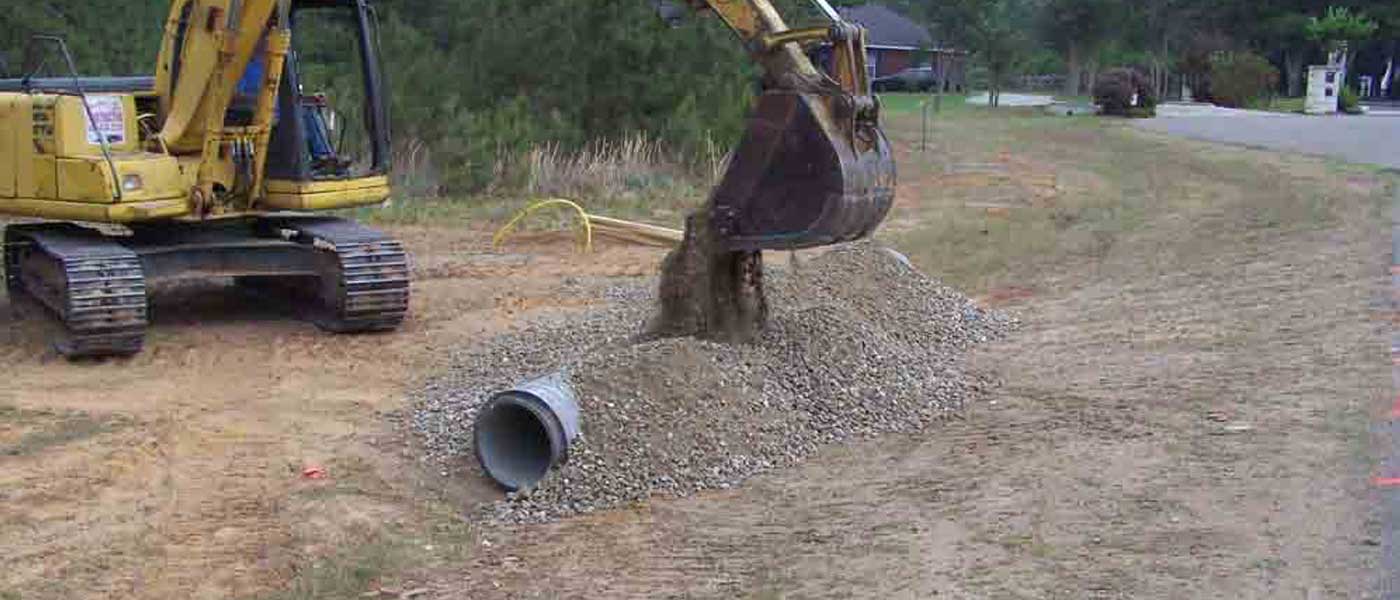Precision Pad Construction for Steady Foundations
Wiki Article
Culvert Setup Facilitated: Step-by-Step Overview for Success
From picking the ideal culvert size to integrating appropriate drain steps, each step in the setup procedure plays an important function in the performance and durability of the culvert system. Stay tuned to discover the essential actions and considerations that can make culvert installation a smooth and successful endeavor.Picking the Right Culvert Size
Picking the proper culvert dimension is essential for ensuring reliable water flow and structural integrity in culvert setup projects - Pad Construction. The dimension of the culvert directly influences the circulation ability of water through the framework. A culvert that is also tiny can result in flooding and overflow, while one that is as well big might lead to decreased water speed, possibly creating debris accumulation and blockagesTo identify the best culvert size, aspects such as the watershed area, height circulation rates, and hydraulic effectiveness need to be very carefully considered. Calculations based on these specifications help in selecting a size that can appropriately handle the anticipated water quantity while lessening the threat of obstructions and structural failing.
It is important to consult engineering standards and criteria to guarantee that the chosen culvert size meets the task demands and regional laws (Pad Construction). By picking the appropriate culvert size, project managers can optimize water flow, protect against possible concerns, and boost the overall effectiveness and long life of the culvert installation
Preparing the Installation Site
Efficient culvert setup necessitates careful preparation of the installation website to make sure ideal architectural support and capability. Prior to commencing the installment process, it is critical to clear the website of any kind of debris, vegetation, or blockages that could hamper the culvert's placement.Additionally, it is crucial to think about factors such as soil composition, groundwater degrees, and environmental influences when preparing the installment website. Conducting an extensive site analysis can assist recognize any type of potential obstacles or risks that may affect the culvert's efficiency. By taking the time to prepare the setup site correctly, you can help guarantee a successful culvert setup that satisfies architectural needs and ensures long-lasting functionality.
Placing the Culvert Appropriately

The quality at which the culvert is put is essential for maintaining a correct incline for water flow. Additionally, the culvert should be oriented properly to make certain that the inlet and electrical outlet are in the correct areas. Pad Construction.
Backfilling and Compacting the Soil
Proper backfilling and compaction of the dirt around the culvert is crucial to guarantee security and stop possible issues in the future. As soon as the culvert is correctly put, the following important action is to backfill the area around it with suitable material. The backfill material ought to be without rocks, particles, and organic matter to avoid damage to the culvert. It is suggested to make use of granular material such as sand or crushed rock for backfilling, as it supplies good drain and compaction properties.Compaction assists in minimizing the possibilities of settlement and ensures consistent assistance around the culvert. It is essential to compact the dirt equally on all sides Clicking Here of the culvert to keep its structural integrity.
Proper backfilling and compaction not only supply stability to the culvert however likewise help in preventing soil disintegration and keeping the durability of the culvert system.
Guaranteeing Appropriate Drain Integration
Incorporating efficient drainage options plays an important role in the total performance and longevity of culvert installments. Proper drain combination is vital for handling water flow, avoiding disintegration, and guaranteeing the structural stability of the culvert system. To achieve this, it is important to create a comprehensive drain plan that thinks about aspects such as the quantity of water expected, the topography of the area, and the kind of dirt present.
Furthermore, incorporating functions like disintegration control measures, such as riprap or greenery, can additionally improve the performance of the drainage system. By carefully preparing and applying these water drainage services, culvert installments can function efficiently and stand up to the test of time.
Verdict
In conclusion, proper culvert installment is critical for keeping reliable water drainage systems. By selecting the appropriate culvert dimension, preparing the installment site, placing the visit this page culvert correctly, web backfilling and compacting the soil, and making sure correct drain integration, success can be accomplished. Following these steps will certainly help make certain the durability and performance of the culvert, eventually adding to the general success of the drain system.Report this wiki page